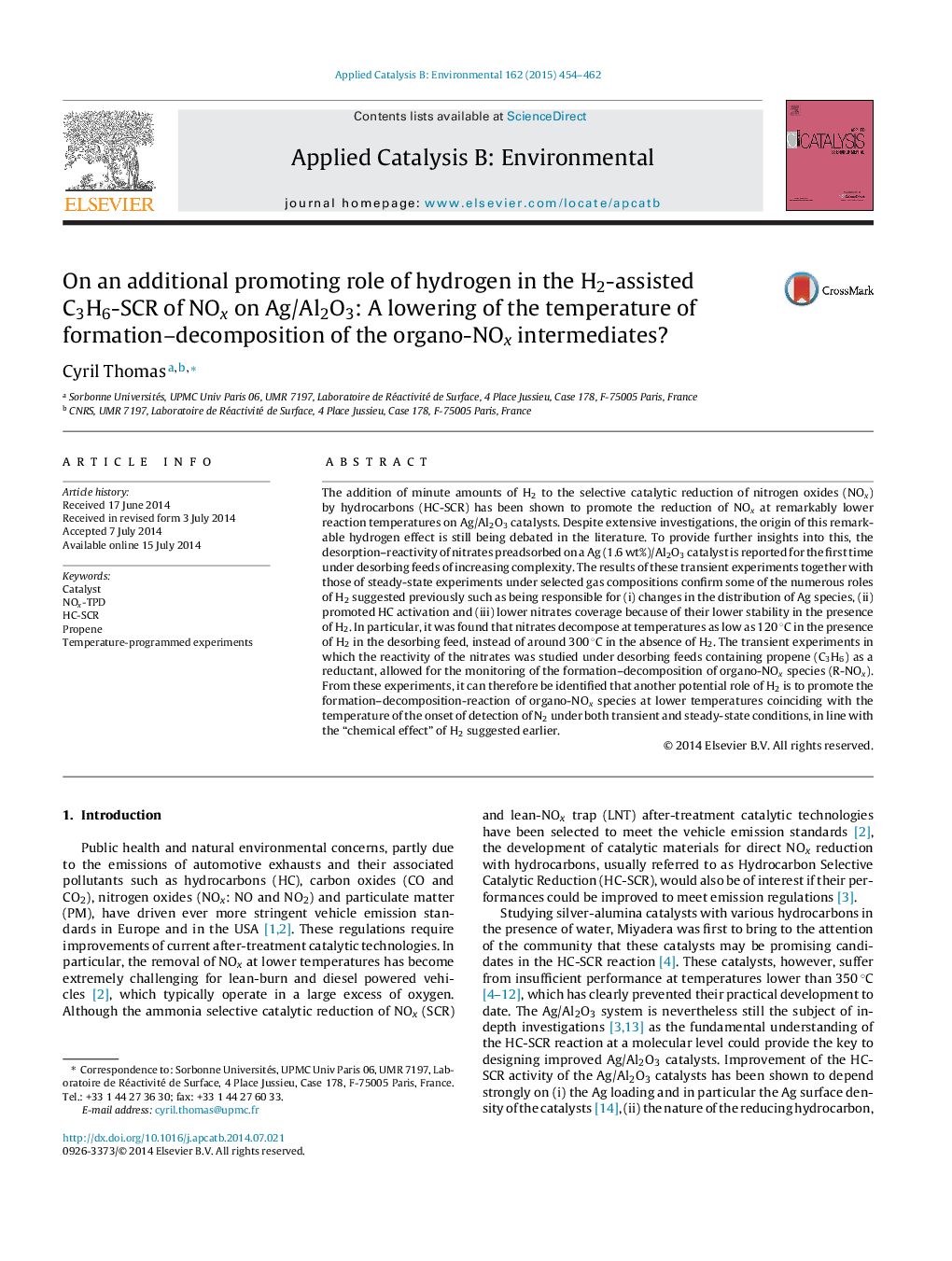| کد مقاله | کد نشریه | سال انتشار | مقاله انگلیسی | نسخه تمام متن |
|---|---|---|---|---|
| 45667 | 46418 | 2015 | 9 صفحه PDF | دانلود رایگان |

• The stability of the nitrates is strongly lowered in the presence of H2.
• The formation–decomposition of organo-NOx intermediates is monitored under transients.
• H2 lowers drastically the temperatures of organo-NOx formation–decomposition.
The addition of minute amounts of H2 to the selective catalytic reduction of nitrogen oxides (NOx) by hydrocarbons (HC-SCR) has been shown to promote the reduction of NOx at remarkably lower reaction temperatures on Ag/Al2O3 catalysts. Despite extensive investigations, the origin of this remarkable hydrogen effect is still being debated in the literature. To provide further insights into this, the desorption–reactivity of nitrates preadsorbed on a Ag (1.6 wt%)/Al2O3 catalyst is reported for the first time under desorbing feeds of increasing complexity. The results of these transient experiments together with those of steady-state experiments under selected gas compositions confirm some of the numerous roles of H2 suggested previously such as being responsible for (i) changes in the distribution of Ag species, (ii) promoted HC activation and (iii) lower nitrates coverage because of their lower stability in the presence of H2. In particular, it was found that nitrates decompose at temperatures as low as 120 °C in the presence of H2 in the desorbing feed, instead of around 300 °C in the absence of H2. The transient experiments in which the reactivity of the nitrates was studied under desorbing feeds containing propene (C3H6) as a reductant, allowed for the monitoring of the formation–decomposition of organo-NOx species (R-NOx). From these experiments, it can therefore be identified that another potential role of H2 is to promote the formation–decomposition-reaction of organo-NOx species at lower temperatures coinciding with the temperature of the onset of detection of N2 under both transient and steady-state conditions, in line with the “chemical effect” of H2 suggested earlier.
Figure optionsDownload as PowerPoint slide
Journal: Applied Catalysis B: Environmental - Volume 162, January 2015, Pages 454–462